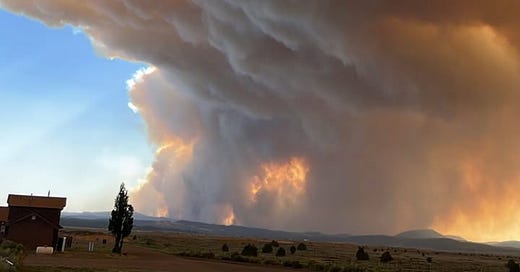Wildfire Preparedness in Alaska Moves To PL4, Nationally PL3 Along With Two Other Regions.
But how does this stack up historically?
This morning brought with it wide swaths of Red Flag warnings, heat warnings, wind warnings, and relative humidities lower than the IQ of a wombat.
Alaska stealthily went PL4, The Great Basin, Southwest, and nationally moved to a wildfire preparedness of 3. What does that mean exactly?
According to The National Interagency Fire Center, a PL3 Nationally m…
Keep reading with a 7-day free trial
Subscribe to The Hotshot Wake Up to keep reading this post and get 7 days of free access to the full post archives.



